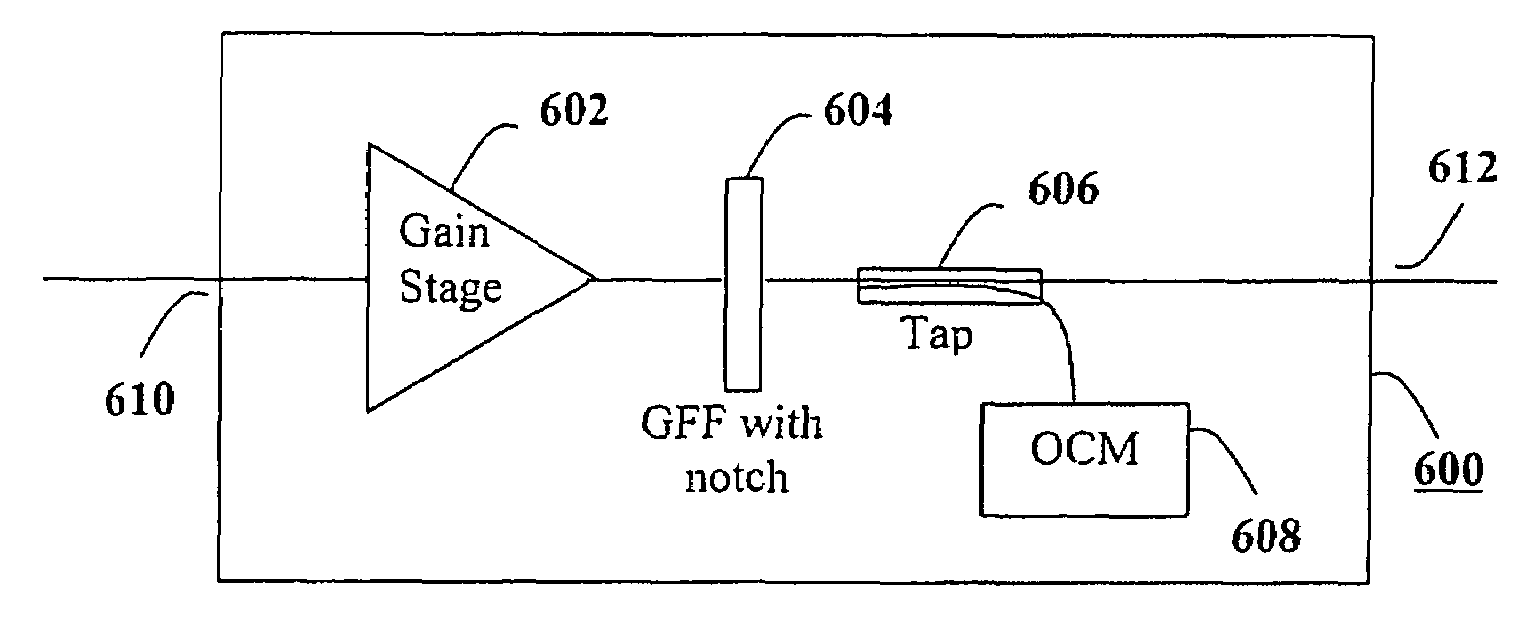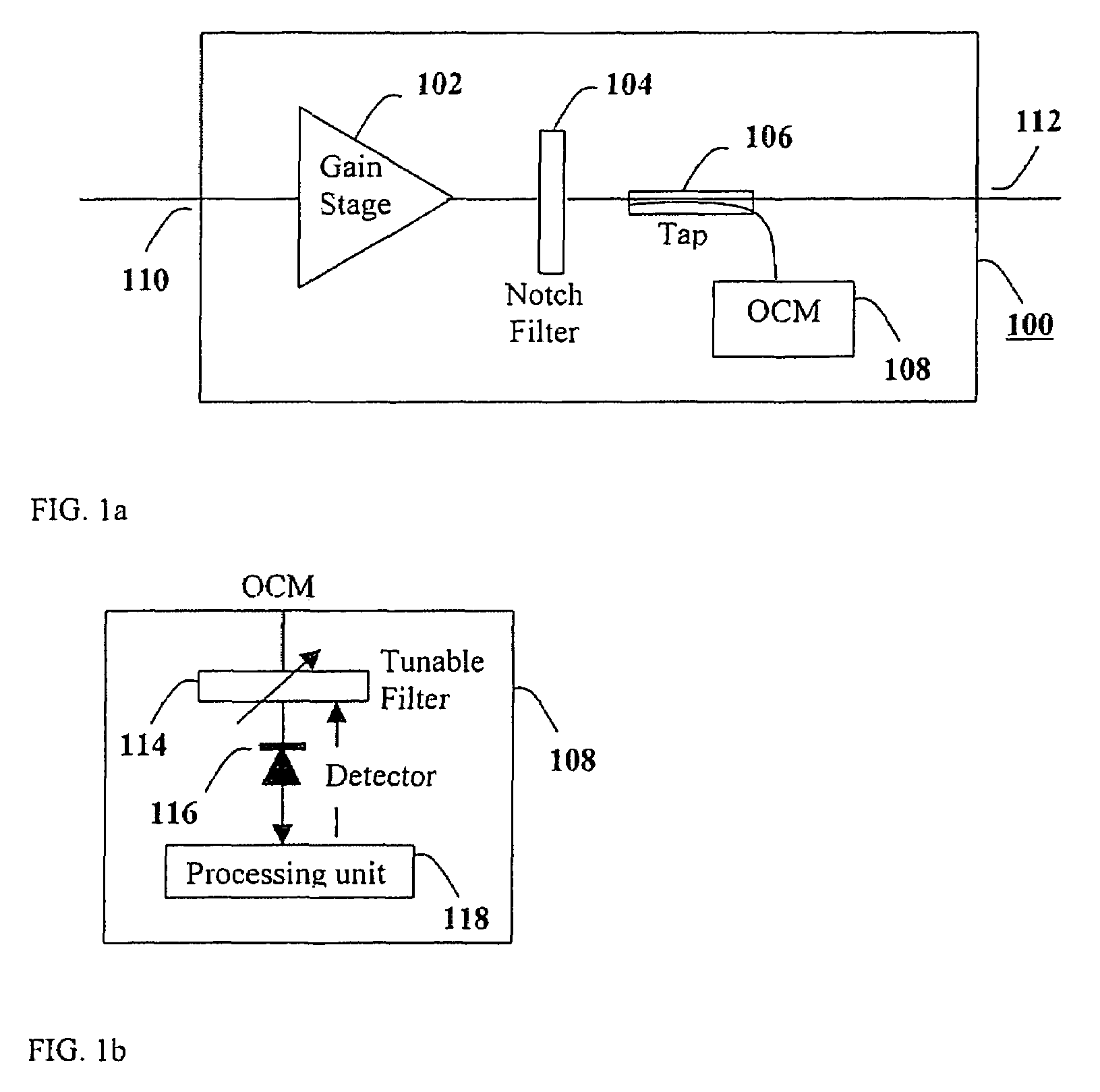Efficient wavelength referencing in a combined optical amplifier-optical channel monitor apparatus
a technology of optical amplifier and monitor, applied in the field of optical communication systems, can solve the problems of channel wavelengths calculated and reported by signal processing algorithms that will drift with time, end up being inaccurate, and aging effect, and achieves efficient wavelength calibration, convenient and efficient wavelength reference, and efficient wavelength calibration
- Summary
- Abstract
- Description
- Claims
- Application Information
AI Technical Summary
Benefits of technology
Problems solved by technology
Method used
Image
Examples
Embodiment Construction
[0047]The principles and operation of the apparatus of the present invention may be better understood with reference to the drawings and the accompanying description.
[0048]Referring now to the drawings, FIG. 1a shows an optical amplifier unit 100 with an embedded OCM according to the preferred embodiment of the invention. Unit 100 includes a gain stage 102, followed by a notch filter 104 and then an optical tap 106 which diverts a small fraction of the optical signal to an OCM 108. In operation, a WDM signal comprising at least one data channel contained within a transmission band (for example, the C-Band, between 1525 and 1565mn) enters unit 100 at a unit input 110. The WDM signal is then amplified by gain stage 102, which also introduces ASE noise within and outside the transmission band. The amplified signal and ASE noise then pass through notch filter 104, which introduces at least one notch in the ASE noise spectrum outside the transmission band. A small fraction of the combine...
PUM
 Login to View More
Login to View More Abstract
Description
Claims
Application Information
 Login to View More
Login to View More - R&D
- Intellectual Property
- Life Sciences
- Materials
- Tech Scout
- Unparalleled Data Quality
- Higher Quality Content
- 60% Fewer Hallucinations
Browse by: Latest US Patents, China's latest patents, Technical Efficacy Thesaurus, Application Domain, Technology Topic, Popular Technical Reports.
© 2025 PatSnap. All rights reserved.Legal|Privacy policy|Modern Slavery Act Transparency Statement|Sitemap|About US| Contact US: help@patsnap.com



